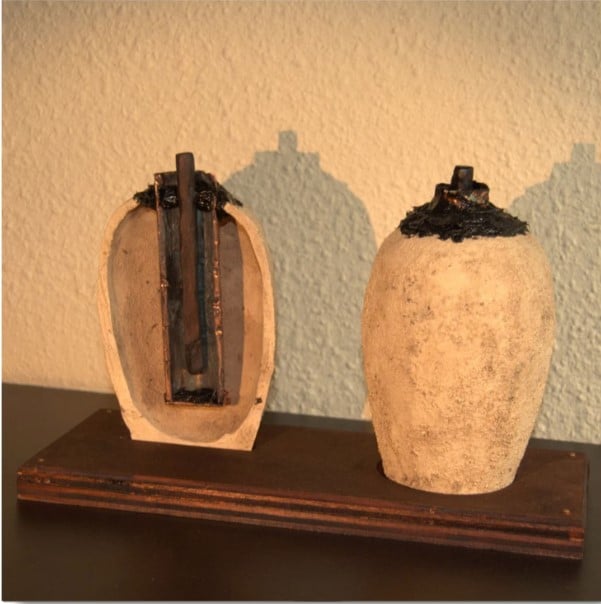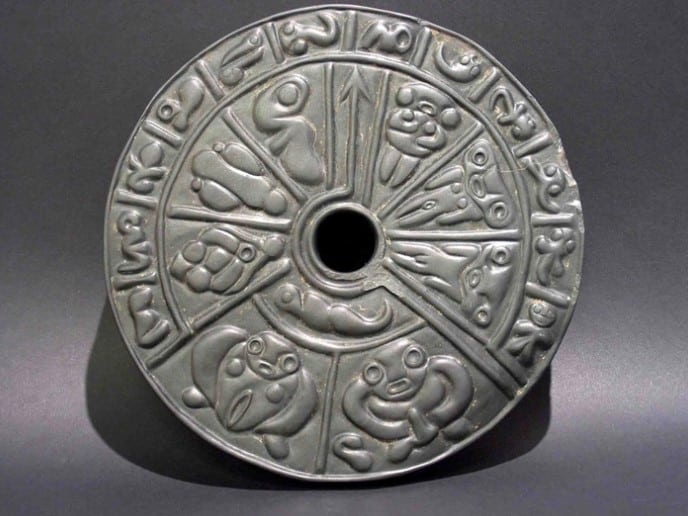6 Mysterious Historical Objects That Even Historians And Archaeologists Can’t Explain
Human history spans thousands of years, and there are countless secrets yet to be discovered by historians. Sometimes, artifacts found during archaeological excavations or stumbled upon unexpectedly raise questions that even the most experienced experts can’t answer.
Despite efforts to determine their age, purpose, and foundations, no one has been able to decipher the mysteries of these objects. However, this only makes the quest for truth more intriguing.
1. The Voynich manuscript

In 1912, Wilfrid Voynich, a Polish-born antiquarian, bought a weird, medieval manuscript. It’s like from way back in the early 15th century (1404–1438), made of animal skin. Experts think it might’ve been made in Italy during the Renaissance.
The manuscript has about 240 pages, but it looks like some pages got lost over time. When you flip through it, the writing goes from left to right. And get this, some pages are even foldable and come in different sizes! But the coolest part? It featured wild drawings and diagrams, some with rough coloring. Sections showing made-up people, plants that don’t exist, and symbols from astrology scattered throughout the manuscript are also seen.
Professional and amateur codebreakers, including American and British ones from World War I and II, have tried to crack the Voynich manuscript. Despite efforts from notable codebreakers like Prescott Currier, William Friedman, Elizebeth Friedman, and John Tiltman, no one has succeeded.
This ancient manuscript remains a mystery, with none of the proposed solutions being independently confirmed.
2. The Baghdad Battery

Back in the 1930s, a strange thing turned up during a dig near Baghdad. Experts had examined its construction and made a conclusion that it was a super old battery that could produce an electrical current of 1 volt. It’s like the kind we use today but way older.
The ancient artifacts are kinda like this: there’s a clay pot that’s about 6 inches tall, with a mouth that’s 1.5 inches wide. Inside, there’s a copper tube rolled up with an iron rod in the middle. They fit together perfectly. At the top of the pot, the iron rod doesn’t touch the copper because there’s some black stuff in between called bitumen.
They used some plugs or stoppers to keep things in place. The copper tube doesn’t keep water out, so if you filled the pot with liquid, it would cover the iron rod too. Over time, the artifact got rusty because it was out in the weather.
Wilhelm König, who ran the National Museum of Iraq back then, thought it operated as a galvanic cell, used for electroplating, or some kind of electrotherapy. But not everyone bought into the idea. Lots of archaeologists rejected this opinion. They didn’t find any super old shiny stuff or evidence of ancient electric therapy, so they didn’t think this thing was what König thought it was.
3. The giant stone spheres of Costa Rica

The stone spheres of Costa Rica are among the most intriguing mysteries in Central American history. There are over 300 massive stone spheres, with the largest one weighing 16 tons and measuring eight feet in diameter, scattered across the Diquís Delta and Isla del Caño. To this day, their purpose, age, and significance continue to be debated.
These mysterious spheres were first discovered in the 1930s by workers clearing the jungle for a banana plantation. Local legends suggested that the spheres contained hidden gold, but when some were blown open with dynamite, they were found to be empty.
Hoopes, who researches ancient cultures of Central and South America, said “The earliest reports of the stones come from the late 19th century, but they weren’t really reported scientifically until the 1930s — so they’re a relatively recent discovery.”
According to a KU researcher, the stones are believed to have been created around 600 A.D., with most dating to after 1,000 A.D. but before the Spanish conquest. Despite centuries of study, the origins and meanings behind these stone spheres remain shrouded in mystery, captivating the imagination of scientists and enthusiasts alike.
“We date the spheres by pottery styles and radiocarbon dates associated with archeological deposits found with the stone spheres,” Hoopes said. “One of the problems with this methodology is that it tells you the latest use of the sphere but it doesn’t tell you when it was made. These objects can be used for centuries and are still sitting where they are after a thousand years. So it’s very difficult to say exactly when they were made.”
4. Incan golden figurines

All of us know that The Wright Brothers, Orville and Wilbur, were the first to make flight a reality for the known world. But new evidence suggests that ancient civilizations might have dreamt up flying machines long before them.
Archeologists digging in Egypt and the Mayan ruins have found clues hinting at early aviation ideas. This discovery challenges what we thought we knew about the history of flight. It’s fascinating to think that flight could have been on the minds of people from ancient times.
Metal sculptures resembling airplanes were discovered in coastal South America. Experts estimate they were created between 500-800 BCE. Because they were made of gold, it’s hard to determine their exact age. However, archaeological evidence nearby suggests they’re at least 1,000 years old. These models look remarkably similar to modern airplanes. Yet, what inspired their creation remains a mystery.
5. The Antikythera mechanism

In the early 1900s, Captain Dimitrios Kontos and a group of sponge divers from Symi island stumbled upon a sunken ship called the Antikythera wreck. They were part of the Hellenic Royal Navy’s first expedition in 1900–01.
During their exploration, they found various artifacts, including an extraordinary device known as the Antikythera mechanism. This discovery happened around July 1901, though it remains a mystery how this mechanism ended up on the ship in the first place.

The Antikythera mechanism is a fascinating piece of history—it’s the oldest scientific calculator ever found. This ancient contraption, made up of more than 30 gears, had an impressive ability to figure out where the sun, moon, and planets were in the sky.
Not only that, but it could also predict eclipses and even keep track of when the Olympic Games would take place.
The ancient Greeks blew minds with their 2,000-year-old invention, the Antikythera mechanism. It totally changed how we see their smarts and craftsmanship. But not everyone’s convinced. Some folks still argue about whether other ancient civilizations could’ve whipped up something like it back in the day.
6. The genetic disc

The Genetic Disc, discovered in Columbia, has a rich history tied to Jaime Gutierrez, a renowned local designer and architect. Gutierrez has spent years amassing an intriguing collection of artifacts from his homeland. Among these treasures, the Genetic Disc stands out as a remarkable find.
Made of an unusual substance known as lydite, the Genetic Disc boasts unique characteristics that set it apart. Measuring approximately 27cm in diameter, or about 10.63 inches, this disc is not only rare but also enigmatic. Lydite, unfamiliar to most, shares similarities with granite in terms of its remarkable hardness.
The ancient Genetic Disc, as seen in the image, showcases intricate craftsmanship and ornamental designs. It raises curiosity about how our ancestors were able to create such remarkable art pieces.
One fascinating aspect of the Genetic Disk is the depiction of various biological images. Surprisingly, some of these images, like sperm, fetuses, and female eggs, are only recognizable to us today through advanced technology like microscopes. It’s a mystery how ancient civilizations had knowledge of such complex biological concepts.

